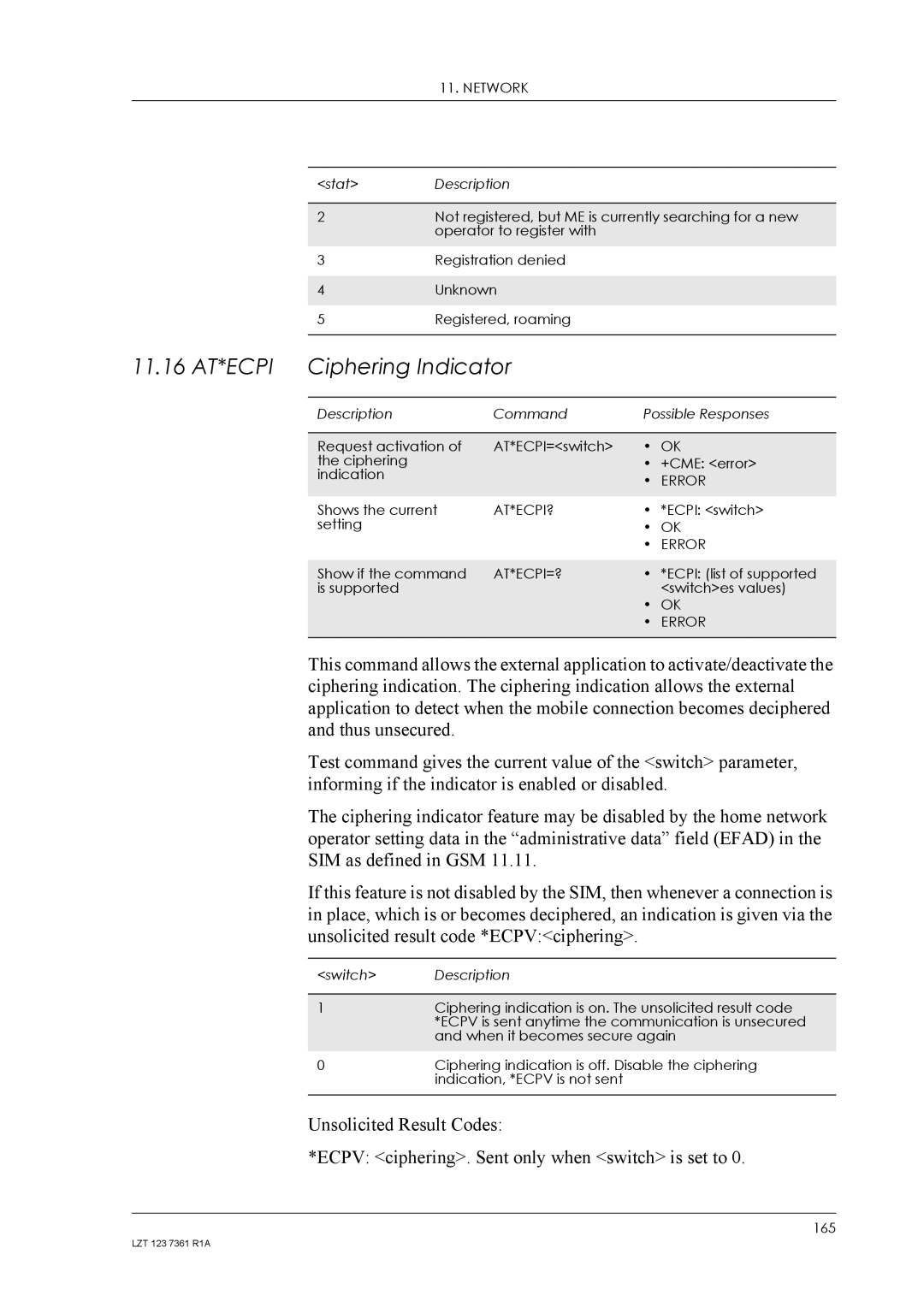
11. NETWORK
|
| <stat> | Description |
|
| |
|
|
| ||||
|
| 2 | Not registered, but ME is currently searching for a new | |||
|
|
| operator to register with |
|
| |
| 3 | Registration denied |
|
| ||
|
|
|
|
| ||
|
| 4 | Unknown |
|
| |
|
|
|
|
|
| |
| 5 | Registered, roaming |
|
| ||
|
|
|
|
| ||
11.16 AT*ECPI | Ciphering Indicator |
|
| |||
|
|
|
|
|
| |
|
| Description |
| Command | Possible Responses | |
|
|
|
|
|
| |
|
| Request activation of | AT*ECPI=<switch> | • | OK | |
|
| the ciphering |
|
| • | +CME: <error> |
|
| indication |
|
| • ERROR | |
|
|
|
|
| ||
|
|
|
|
|
| |
|
| Shows the current | AT*ECPI? | • | *ECPI: <switch> | |
|
| setting |
|
| • | OK |
|
|
|
|
| • ERROR | |
|
| Show if the command | AT*ECPI=? | • | *ECPI: (list of supported | |
|
| is supported |
|
|
| <switch>es values) |
• OK
• ERROR
This command allows the external application to activate/deactivate the ciphering indication. The ciphering indication allows the external application to detect when the mobile connection becomes deciphered and thus unsecured.
Test command gives the current value of the <switch> parameter, informing if the indicator is enabled or disabled.
The ciphering indicator feature may be disabled by the home network operator setting data in the “administrative data” field (EFAD) in the SIM as defined in GSM 11.11.
If this feature is not disabled by the SIM, then whenever a connection is in place, which is or becomes deciphered, an indication is given via the unsolicited result code *ECPV:<ciphering>.
<switch> | Description |
|
|
1 | Ciphering indication is on. The unsolicited result code |
| *ECPV is sent anytime the communication is unsecured |
| and when it becomes secure again |
0 | Ciphering indication is off. Disable the ciphering |
| indication, *ECPV is not sent |
|
|
Unsolicited Result Codes:
*ECPV: <ciphering>. Sent only when <switch> is set to 0.
165
LZT 123 7361 R1A
